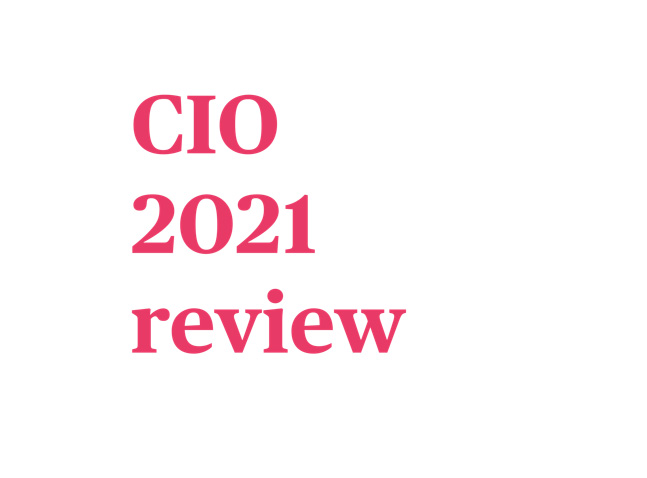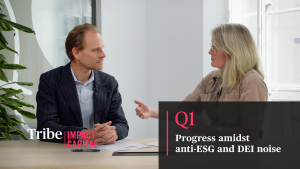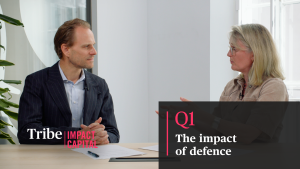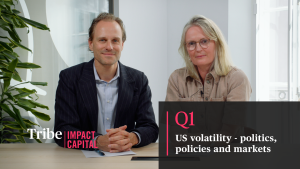CIO 2021 review

As the year draws to a close, there are three key themes that have defined the investment year for us.
A strong sustainability sentiment
There’s been a clear continuation of the
Environmental, Social and Governance (ESG)
Climate crisis
The International Corporate Governance Networks’ (ICGN) letter to the OECD as they start a review of the Principles of Corporate Governance, showed how influential the B Corps movement and mission-driven business have become in shifting thinking. ICGN has asked the OECD to consider the addition of purpose statements and the amendment of Directors’ Duties to align with the best interests of the company, not the shareholder. Whilst not completely aligned to the tenets of being a B Corps, allowing companies to execute decisions in their best interests moves them to understanding stakeholder interests.
The International
Sustainability
Sustainability
Externalities
An inflated economic rebound
2021 saw the rapid return of economic activity and confidence, despite periods of concern about emerging Covid variants. This led to the build-up of inflationary pressures which dominated markets and investor sentiment all year. In turn, this created a challenging environment for managing impactful, balanced, multi-asset portfolios, particularly with an investment process like ours that generally favours companies with higher, longer term growth expectations (“growth stocks”). An environment with higher expectations can sometimes place a lower value on more distant earnings.
This is one reason why patient capital is important. Impact can only happen over extended periods of investment. This can lead to tougher short term trading conditions for those companies at the forefront of delivering long term, systemic change.
A strained supply chain
On a related note, the rapid snap back in demand for physical goods has caused many companies to face delays and complications in assembling products and fulfilling orders. This has had varying effects on the companies we invest in, with heavy industrials hardest hit, especially those with complex supply chains and those reliant on China (a country that continues to follow a zero Covid policy by enacting localised lockdowns).
This rapid snap back also contributed to the energy crises around the world. As lockdowns lifted, demand and the price of energy increased, particularly in Europe where the season change to Winter exacerbated the problem. In the UK this led to significant disruption as many smaller energy companies that were trapped by the UK government’s energy price cap, put in place to protect the consumer, folded due to extreme financial pressures. This served to highlight a number of challenges: the growing pressure around the price of energy and its different forms (black v green); how the transition and access to greener, cleaner and cheaper sources of energy needs to speed up; the need to reduce the instability of a national grid and strengthen resilience through more localised energy provision; and ensuring fuel poverty doesn’t become the narrative of the next decade.
Climate continued to be the over-arching theme that dominated the year in the run up to the long-awaited climate conference in Glasgow (COP26). Many of the issues around energy security, transition, poverty and
Equity
Glasgow Climate Pact
Climate crisis
The view ahead
and how Central Banks will manage it will be a dominant theme in 2022. It will most likely be managed through a gradual tightening of monetary policy. Whilst it’s difficult to anticipate how high
could spike in Q1 2022, in the UK the Consumer Price
(CPI) could reach 7% in April. However, we don’t believe runaway
to be a material risk.
will naturally ease on a year-on-year comparison basis as we lap the higher CPIs of the second half of 2021 and gradual further loosening of restrictions will ease supply chain blockages. In these unprecedented times, we remain open to diverse possibilities – fiscally, politically, socially and environmentally. Diversifying risks and opportunities will influence our
Asset class
Bonds
Structural changes to the global economy throughout 2021, notably the shortening of supply chains and lower workforce participation which led to higher wage demands, will continue to contribute to higher embedded
. We believe bond yields can continue to increase into next year, with yields moving inversely to the price of bonds. Therefore, we’re keeping exposure to the
Asset class
The use of bonds to stimulate investment into the green transition and the use of
Sustainability
Fixed income
Asset class
Equities
On a macro level, the valuation support for owning equities has weakened following the strong market rallies of 2021. Many stock markets in developed countries hit all-time highs in the last weeks of the year. The relative valuation of the
Asset class
Sustainability
We expect to see a continued focus on growth stocks in the impact investing world, specifically in clean tech, renewables and healthcare, but with more focus on
Biodiversity
Ecosystem services
Emerging markets
Alternatives
2022 will be a year where diversifying risks and exposure will be more important than ever. Given higher
poses major risk to equities (especially growth equities) and bonds, finding investments which can hedge against this risk, or be resilient to it, will be key. It’s with this in mind, we enter the year with an overweight exposure to alternative investments. We define these as investments where revenues earned and financial performance should show relatively low correlation to the wider
Equity
Credit
A number of impactful alternative investments became available in 2021. These allowed us to broaden our exposure to include investments into solar power and wind projects both in the UK and in
Emerging markets
Forestry
Social housing
2021 saw another significant increase in capital flows across the
Asset class





